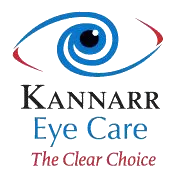
Is Your Eye Pain an Emergency?
Do you know when you should call the eye doctor if you have eye pain? Waiting too long to seek treatment can prolong your pain and result in permanent vision loss in some cases.
Don't Ignore Eye Pain
Pain is a warning sign that should never be overlooked. Even if your pain seems fairly mild, it's important to see your optometrist as soon as possible. If you wait, the pain may worsen and you may face the loss of vision.
Do you know what types of conditions and injuries require an immediate visit to the eye doctor or emergency room? You'll need immediate care if you experience any of these six eye issues.
Corneal Abrasion or Ulcer
A scratch or ulcer on your cornea, the clear, rounded layer that covers your iris and pupil, can be very painful. Corneal abrasions often heal on their own, but ulcers may require treatment with antibiotics, antifungal, or antiviral eye drops to prevent scarring and vision loss.
Other symptoms of abrasions or ulcers may include blurry vision, tearing, sensitivity to light, redness, and a foreign body sensation. You may be more likely to develop an infected corneal ulcer if you wear your contact lenses longer than recommended, don't clean your lenses often enough, or swim in them.
Foreign Bodies and Lacerations
An eye injury can occur if you get something in your eye or a foreign object cuts your eye. These injuries can occur if you don't wear eye protection when you play sports or use machinery, but may also happen if you have a motor vehicle or other type of accident. Even mowing the lawn without eye protection can increase your risk of one of these eye injuries.
Depending on the severity of the injury, you may need antibiotic drops, removal of the foreign body, stitches, or surgery to repair damage caused by a cut.
Angle-Closure Glaucoma
Angle-closure glaucoma symptoms occur suddenly and may include severe pain in your eye and head, loss of vision or blurry vision, nausea, vomiting, or halos around lights. The condition occurs when drainage channels inside your eye become blocked by your iris, increasing the pressure in your eye.
Surgery to remove a small piece of the iris and unblock drainage channels will help protect your vision, although some vision loss may still occur.
Ocular Shingles
In addition to causing a painful, red rash on your body, shingles may also affect your eyes. Approximately 200,000 Americans develop shingles in their eyes every year, according to the American Academy of Ophthalmology. Redness, vision changes, light sensitivity, and tearing can also occur with ocular shingles. Vision loss can be temporary or permanent.
Treatment includes steroid drops to decrease inflammation and drops that reduce pain by keeping your pupils dilated.
Optic Neuritis
Optic Neuritis occurs when your optic nerve begins to swell. The nerve transmits light impulses from your eyes to your brain. If the nerve doesn't function properly, you'll have difficulty seeing. You may feel pain when you move your eyes or might notice that the back of your eye hurts if you have optic neuritis. Other symptoms can include blurry vision and faded colors.
Corticosteroids, a type of medication that decreases swelling, can be helpful if you have optic neuritis.
Uveitis
The middle part of the eye becomes inflamed if you have uveitis. The condition can cause mild to severe vision loss if eye tissue is damaged. Pain, blurry vision, small pupil size, redness, and sensitivity to light are common symptoms. People who have certain diseases and conditions, such as multiple sclerosis, rheumatoid arthritis, AIDS, shingles, ulcerative colitis, and Kawasaki disease, are at an increased risk of developing uveitis.
Eye doctors treat uveitis with corticosteroid drops, pills, and injections to reduce spasms or suppress the immune system. In some cases, surgery may be necessary.
Do you or a family member have eye pain? Prompt treatment will help you protect your vision. Call our office right away to schedule an appointment.
Sources:
National Eye Institute: Uveitis, 7/11/19
American Academy of Ophthalmology: Herpes Zoster Ophthalmicus: A Growing Risk, 7/17
Cleveland Clinic: Eye Pain: Possible Causes
American Academy of Ophthalmology: Recognizing and Treating Eye Injuries, 2/25/19
All About Vision: Eye Shingles: Causes, Symptoms, Treatments
American Academy of Ophthalmology: What Is Optic Neuritis, 4/9/20
